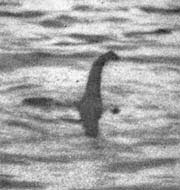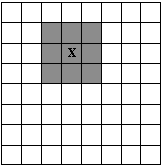Programozó versenyekDEIK Regionális Programozó Csapatverseny, gyakorló feladatsor
2012. október 26. 20:00 –
2012. november 23. 0:00
|
Nessie nyomában
A Loch Ness-i szörny egy rejtélyes és ismeretlen állat. Azt mondják róla, hogy a
Loch Ness-i tóban él, amely egy nagyon mély, édesvízű tó Inverness városa mellett,
Észak-Skóciában. Nessie-t rendszerint a tavi szörnyek közé szokták besorolni.
(http://en.wikipedia.org/wiki/Loch_Ness_Monster)
2003 júliusában a BBC a Loch Ness-i tó minden részére kiterjedő vizsgálatot végzett. A vizsgálathoz 600 radarsugarat használtak, de semmi nyomát nem találták „tengeri szörnynek” (pontosabban semmilyen nagy, ismert vagy ismeretlen állatnak) a tóban. A BBC csapata megállapította, hogy Nessie nem létezik. Most szeretnénk megismételni a kísérletet.
Adott egy n soros és m oszlopos rács, amely a tavat reprezentálja (6 ≤ n, m ≤ 10000). Határozd meg a legkisebb olyan s számot, amely megmondja, hogy hány radart kell a négyzetrácsra helyeznünk ahhoz, hogy ellenőrizhessük a rács minden celláját, a következő feltételekkel:
- Minden radar egy cellát foglal el a rácson, miközben a saját celláját, illetve a vele szomszédos cellákat ellenőrzi.
- A rács szélén lévő cellákat nem kell lefedni, mivel Nessie úgysem tudna oda elbújni (ahhoz ugyanis túl nagy).



Például az ábrákon az X egy radart reprezentál, míg az árnyékolt cellák a radarok által lefedett cellákat mutatják. Az utolsó ábra egy lehetséges megoldást ábrázol.
A bemenet specifikációja
A bemenet első sora egy t egész számot tartalmaz, amely a tesztesetek számát jelzi. Minden tesztesethez tartozik egy sor, amelyben két, egymástól szóközökkel elválasztott szám található (6 ≤ n, m ≤ 10000), melyek a rács méretét adják meg (n sor és m oszlop).
A kimenet specifikációja
A kimenetnek minden tesztesetre egy sort kell tartalmaznia, amelyben a legkisebb olyan radarszám áll, amely teljesíti a fenti feltételeket.
Példa bemenet
36 67 79 13
A példa bemenethez tartozó kimenet
4412